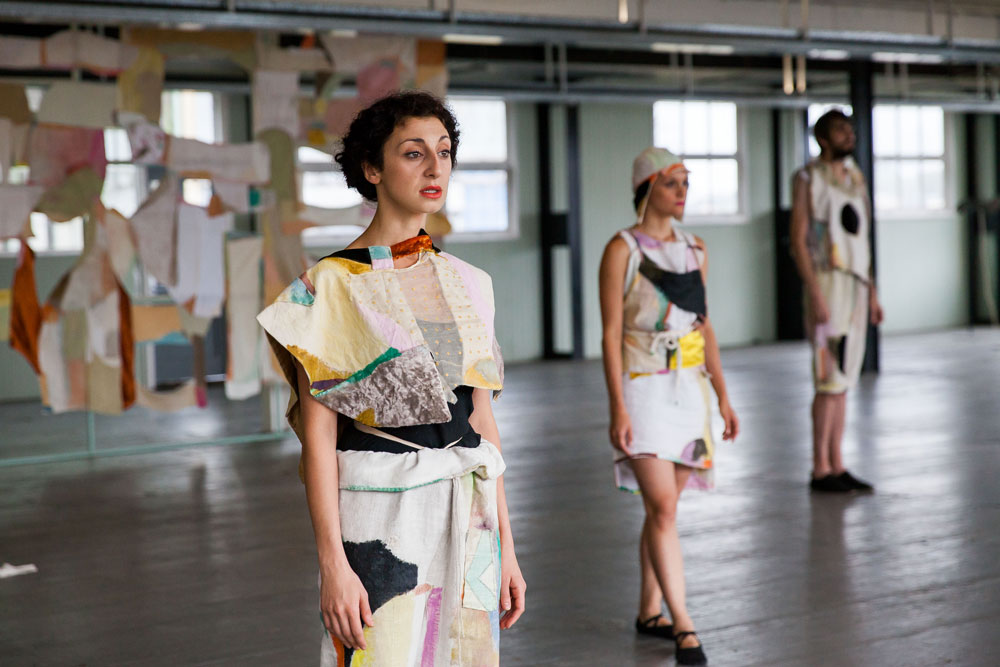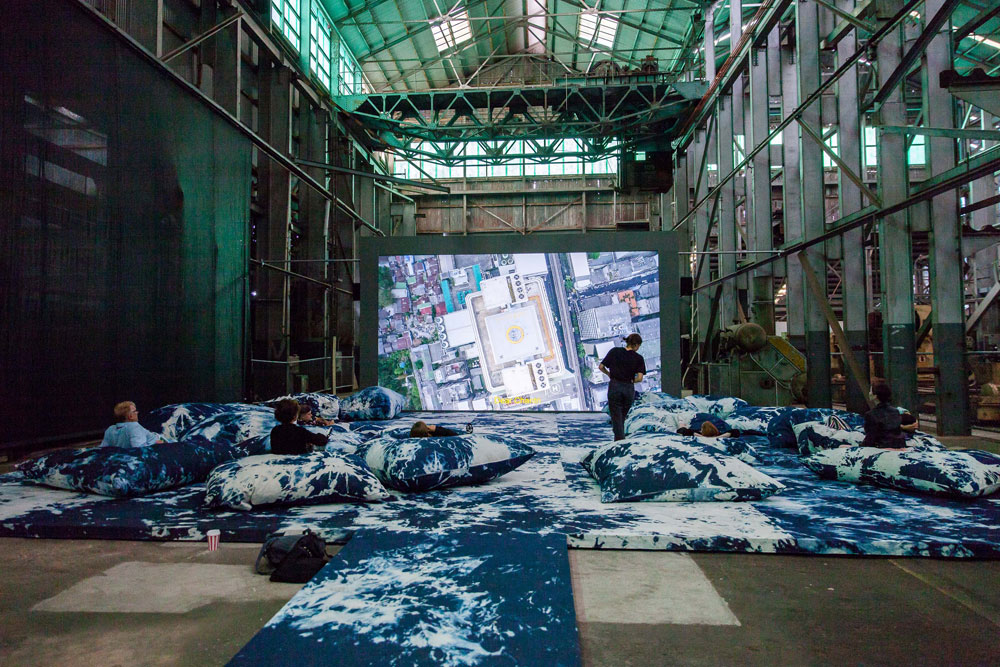20th Sydney Biennale
Various venues, Australia
Various venues, Australia

Some ideas refuse to grow old. In her essay for the 20th Sydney Biennale, artistic director Stephanie Rosenthal writes that many of the 83 artists (half of whom are women) from 35 countries in ‘The Future Is Here – It’s Just Not Evenly Distributed’ believe that, despite radical developments in technology, ‘there is much more to the world than what we are able to grasp mentally and experience physically’. I’m sure William Blake and Johannes Vermeer felt the same way. The axis on which Rosenthal’s show pivots is the contemporary commingling of questions around time, technology and subjectivity. Her focus is summed up in her question: ‘If each era posits a different view of reality, what is ours?’ Given that the biennale includes the work of so many artists from so many different countries, the question, surely, is less about what constitutes reality – an eternally slippery term – than who, exactly, is being referred to in the word ‘ours’. These are the kinds of complications hinted at in the riddle-wrapped-in-a-title of this (mostly) stimulating biennale, which is a quote attributed to the sci-fi novelist William Gibson. I assume he meant that the inequality of the planet’s distribution of wealth somehow reflects the idea of the future as being aligned to that of progress. Or perhaps not.

The biennale is staged in venues across Sydney, including an island, a garden, a cemetery, an inner-city lane, an abandoned train station and four major art galleries. Rosenthal – who is German and the chief curator of the Hayward Gallery in London – spent eight months living in the city, and it shows. She’s responded with great sensitivity to Australia’s complexity: a former British colony that is now a thriving multicultural country, geographically close to Asia and the home to Indigenous peoples who, over the past 40,000 years or so, have spoken more than 300 languages. Rosenthal, along with 13 curatorial advisors, has structured the biennale via a series of ‘Embassies of Thought’, spaces that, unlike traditional embassies, are not defined by race, culture or geography, but by a loose sharing of ideas or sensibility – a timely, idealistic conceit.

The highlights are many and varied: at the Royal Botanic Gardens, an early morning ‘Welcome to Country’ ceremony acknowledging the Gadigal people as the traditional custodians of the land, was performed next to Archie Moore’s structure, A Home Away from Home (Bennelong/Vera’s Hut) (2016). (Bennelong was an Aboriginal man whose association with the first Governor of Australia made him famous during the first decades of European settlement.) At the Art Gallery of New South Wales, a wildly colourful fibre sculpture by Sheila Hicks cascades down the facade (The Questioning Column, 2016) while inside the museum a two-metre weaving, Solwata (2015–16) – made by Erub Arts, a Torres Strait Islander collective, from reclaimed fishing nets, shells and other ocean detritus – evokes the ‘ghost nets’ that are destroying the ecology of their islands. Nyapanyapa Yunupingu, of Australia’s Gumatj people, has created a mesmerizing forest of hand-painted larrakitj (memorial poles) while Japanese artist Taro Shinoda has fashioned a minimal space for contemplation from crumbling white clay and red ochre (Abstraction of Confusion, 2016). On Cockatoo Island, a former convict settlement in the middle of the harbour, Australian artist Justene Williams stages a wonderfully riotous re-telling of the 1913 futurist opera Victory over the Sun, a revolutionary tale re-imagined for a country that knows the vagaries of the sun all too well, while London-based, American artist Alexis Teplin’s captivating Arch (The Politics of Fragmentation) (2016) comprises a group of actors draped in painted canvas, performing an absurdist dance while reciting a script of original and quoted texts by women writers and artists. Thai artist and musician Korakrit Arunanondchai has created one of the most visually enthralling installations in the show. Painting with History in a Room Filled with People with Funny Names 3 (2015–16) is screened in a massive space carpeted with tie-die fabric and furnished with denim cushions. The film follows the journey of the young artist across Thailand and is narrated in diaristic, Terrence Malick-like fragments to a soundtrack of atmospheric electronica. Also on Cockatoo Island, Turkish artist Cevdet Erek’s eerie outdoor sound piece, Room of Rhythms – Long Distance Relationship (2016), evokes the heartbeats of people long-dead. In the Museum of Contemporary Art, the work of the late Israeli choreographer and textile artist Noa Eshkol was a revelation: her enormous, joyfully abstract patchwork wall-hangings are a sharp contrast to her Eshkol-Wachman movement notation – a ‘thinking tool’ for recording and studying movement that she devised with Avraham Wachman in the 1950s, which is displayed in adjacent vitrines. Upstairs, Adam Linder’s Some Proximity (2014–ongoing) comprises two dancers interpreting art texts – a neat reversal of the usual role of the critic responding after the fact.

This year is the first time the wonderfully named Mortuary Station has been used by the biennale. Once the final stop on the way to a cemetery, this neo-Gothic structure is an apt venue for Taiwanese artist Charwei Tsai’s Spiral Incense Mantra (2014) – cones of incense inscribed with Buddhist texts about impermanence – and London-based artist Marco Chiandetti’s The Hand of the Artist in Bird Seed (2015): casts of the artist’s body made from seed that will disappear as they are eaten by birds. At Carriageworks, Sydney-based artist Jamie North’s monumental cement pillars overgrown with Australian native plants (Succession, 2016) is compelling, as is Aura Satz’s hypnotic film exploring the connections between women’s suffrage and the arms industry (Between the Bullet and the Hole, 2015). The photographs, books and video work that comprise Yao Jui-Chung and Lost Society Document’s The Mosquito Project (2010–14) – a survey assisted by students of abandoned government construction projects in Taiwan – was absorbing and sobering in equal measure.

The biennale also utilizes laneways and streets. For What Remains (2016), Daniel Boyd, of Australia’s Kudjila/Gangalu peoples, has painted a wall black and covered it with hundreds of tiny mirrors that reflect the neighbourhood back on itself as a series of brilliant fragments. Far less convincing is Colombian-born, London-based Oscar Murillo’s contribution: he destroyed his British passport on his plane bound for Sydney and was deported to Colombia on his arrival in Australia. (Apparently there’s a book and a sound piece about this now, but it hadn’t yet been installed when I visited.) He stated that ‘this obliteration of passport and identity forced open a space of renegotiation’. Oh, please. All he really made clear is that you need a passport to travel. At Artspace, Karen Mirza and Brad Butler’s ongoing project ‘The Museum of Non Participation’ also attempts too much with too little. The show includes film and audio footage of the terrorist attack at the Taj Mahal Palace Hotel in Mumbai in 2008, a video in which a woman ‘uses movement to exorcise [Margaret] Thatcher’s voice, retraining the body to resist capitalism’ and The Ectoplasm of Neoliberalism (2015) – silk collages of images taken from radical and psychic archives. According to the catalogue the latter is ‘a meditation on the vaporization and condensation of structural violence and its effect on the individual body and its nervous system in relation to our collective social body’. Really? The gulf between the actual artworks and what the artists are attempting to communicate here is simply too wide. It’s also a shame that the catalogue of this rich and complex biennale is riddled throughout with this kind of jargon.

On a balmy evening at the end of the opening week, a crowd – each of whom were given an A4 sheet of quotes about the calamity of climate change – gathered outside Carriageworks for a performance, BDH (2016), by one of Australia’s best-known artists, Mike Parr. The Talking Heads’ 1983 song, ‘Burning Down the House’ (the BDH of the title), played at top volume; as it came to an end, Parr set a group of his prints (apparently AUD$750,000 worth) on fire. In an interview, Parr stated: ‘If you’ve got no future, it’s unbearable to be reminded of what culture really means. Destroying these prints is a desperately logical outcome of what I think and believe.’ It was a simple, elegiac response to a situation that is both yet to come and all-too present.























